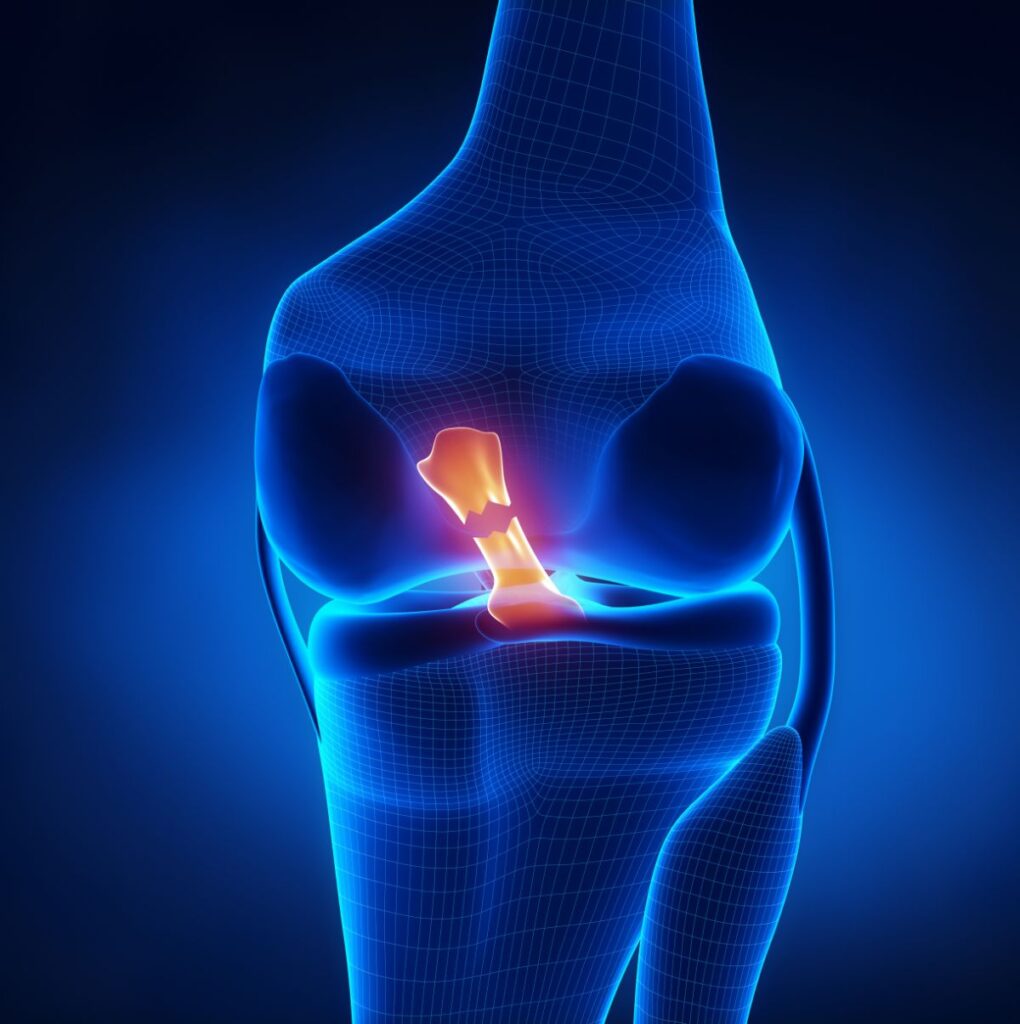Anterior Cruciate Ligament Tear
The anterior cruciate ligament (ACL) is a ligament deep within the knee that stabilizes the knee. A tear of the ACL commonly results from a twisting or hyperextension episode of the knee. Partial tears of the ACL do occur; however, it is far more common to have a complete tear. Due to the mechanism that causes ACL tears, meniscus tears commonly accompany an ACL tear.

ACL Injuries
At the time of injury, patients commonly report an audible pop. Following the initially injury, patients typically experience knee swelling, a feeling of instability and giving way when doing activities, as well as pain with squatting and jumping.
ACL injuries are confirmed by obtaining an MRI (magnetic resonance imaging) study of the knee. If swelling is painful and dramatic, causing decreased range of motion in the knee, sometimes aspiration of the knee is necessary to remove the accumulated fluid. It is also common for a patient to be placed on a short course of physical therapy to work on returning range of motion to normal and to help resolve the inflammation of the knee.
In case of a complete tear, arthroscopic surgery to reconstruct the torn ACL is necessary in most patients. This ACL is reconstructed with an allograft (cadaver tissue) or autograft (a tendon taken from the patient’s knee). Long-term knee instability from untreated ACL tears can lead to further meniscus damage and early onset degenerative arthritis.






